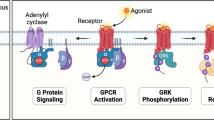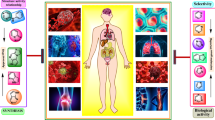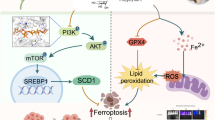Abstract
There is increasing evidence for a role of cytidine 3′,5′-cyclic monophosphate (cCMP) as second messenger. In a recent study, we showed that cCMP activates both purified guanosine 3′,5′-cyclic monophosphate (cGMP)-dependent protein kinase Iα (PKG Iα) and adenosine 3′,5′-cyclic monophosphate (cAMP)-dependent protein kinase (PKA) isoenzymes with the regulatory subunits RIα and RIIα. Moreover, the membrane-permeant cCMP analog dibutyryl (DB)-cCMP induces effective vasodilation and inhibition of platelet aggregation via PKG Iα, but not via PKA. These data prompted us to conduct a systematic analysis of the effects of cyclic nucleotide (cNMP) analogs on purified PKG Iα and PKA RIα and RIIα We also studied the effect of DB-cCMP on PKA-dependent phosphorylation of the transcription factor cAMP response-binding protein (CREB) in S49 wild-type lymphoma cells and S49 kin− cells, devoid of the catalytic subunit of PKA. The major cellular metabolite of the prodrug DB-cCMP, N4-monobutyryl (4-MB)-cCMP, was a partial and low-potency activator of purified PKG Iα and a full and moderate-potency activator of PKA RIα and RIIα. Sp-cCMPS and Sp-cAMPS activated PKA RIα and RIIα with much higher potency and efficacy than PKG Iα. Molecular modeling suggested that the cytidine ring interacts with PKG Iα mainly via hydrophobic interactions, while the butyryl group projects away from the kinase. In contrast to DB-cAMP, DB-cCMP did not induce PKA-dependent phosphorylation in intact cells. Taken together, our data show that N4-monobutyryl-cCMP (4-MB-cCMP) activates PKA RIα and PKA RIIα more potently and with higher efficacy than PKG Iα in vitro but not in vivo. cNMP phosphorothioates constitute a starting point for the development of PKA activators with high selectivity relative to PKG.







Similar content being viewed by others
Abbreviations
- cAMP:
-
Adenosine 3′,5′-cyclic monophosphate
- cGMP:
-
Guanosine 3′,5′-cyclic monophosphate
- cCMP:
-
Cytidine 3′,5′-cyclic monophosphate
- CREB:
-
cAMP response-binding protein
- cNMP:
-
Nucleoside 3′,5′-cyclic monophosphate
- PKA:
-
cAMP-dependent protein kinase
- PKG Iα:
-
cGMP-dependent protein kinase Iα
- AM:
-
Acetoxymethyl ester
- MB:
-
Monobutyryl
- DB:
-
Dibutyryl
- PDE:
-
Phosphodiesterase
- MRP:
-
Multidrug resistance protein
- NBD:
-
Nucleotide-binding domain
References
Akimoto M, Zhang Z, Boulton S, Selvaratnam R, VanSchouwen B, Gloyd M, Accili EA, Lange OF, Melacini G (2014) A mechanism for the auto-inhibition of hyperpolarization-activated cyclic nucleotide-gated (HCN) channel opening and its relief by cAMP. J Biol Chem. 289:22205–22220
Bähre H, Danker KY, Stasch J-P, Kaever V, Seifert R (2014) Nucleotidyl cyclase activity of soluble guanylyl cyclase in intact cells. Biochem Biophys Res Commun 443:1195–1199
Bartsch M, Zorn-Kruppa M, Kühl N, Genieser HG, Schwede F, Jastorff B (2003) Bioactivatable, membrane-permeant analogs of cyclic nucleotides as biological tools for growth control of C6 glioma cells. Biol Chem 384:1321–1326
Beckert U, Wolter S, Hartwig C, Bähre H, Kaever V, Ladant DW, Seifert R (2014a) ExoY from Pseudomonas aeruginosa is a nucleotidyl cyclase with preference for cGMP and cUMP formation. Biochem Biophys Res Commun 450:870–874
Beckert U, Grundmann M, Wolter S, Schwede F, Rehmann H, Kaever V, Kostenis E, Seifert R (2014b) cNMP-AMd mimic and dissect bacterial nucleotidyl cyclase toxin effects. Biochem Biophys Res Commun. In press
Beste KY, Seifert R (2013) cCMP, cUMP, cTMP, cIMP and cXMP as possible second messengers: development of a hypothesis based on studies with soluble guanylyl cyclase α1β1. Biol Chem 394:261–270
Beste KY, Burhenne H, Kaever V, Stasch J-P, Seifert R (2012) Nucleotidyl cyclase activity of soluble guanylyl cyclase α1β1. Biochemistry 51:194–204
Beste KY, Spangler CM, Burhenne H, Koch KW, Shen Y, Tang WJ, Kaever V, Seifert R (2013) Nucleotidyl cyclase activity of particulate guanylyl cyclase A: comparison with particulate guanylyl cyclases E and F, soluble guanylyl cyclase and bacterial adenylyl cyclases CyaA and edema factor. PLoS One 8:e70223
Blecher M, Hunt NH (1972) Enzymatic deacylation of mono- and dibutyryl derivatives of cyclic adenosine 3’,5’-monophosphate by extracts of rat tissues. J Biol Chem 247:7479–7484
Bourgoyne JR, Eaton P (2010) Oxidant sensing by protein kinases A and G enables integration of cell redox state with phosphoregulation. Sensors 10:2731–2751
Corbin JD, Øgreid D, Miller JP, Suva RH, Jastorff B, Døskeland SO (1986) Studies on cGMP analog specificity and function of the two intrasubunit binding sites of cGMP-dependent protein kinase. J Biol Chem 261:1208–1214
Desch M, Schinner E, Kees F, Hofmann F, Seifert R, Schlossmann J (2010) Cyclic cytidine 3’,5-monophosphate (cCMP) signals via cGMP kinase I. FEBS Lett 584:3979–3984
Erdorf M, von der Ohe J, Seifert R (2011) Impaired P2X and P2Y receptor-mediated signaling in HPRT-deficient B103 neuroblastoma cells. Neurosci Lett 504:311–315
Ervens J, Seifert R (1991) Differential modulation by N4,2’-O-dibutyryl cytidine 3’:5’-cyclic monophosphate of neutrophil activation. Biochem Biophys Res Commun 174:258–267
Ervens J, Schultz G, Seifert R (1991) Differential inhibition and potentiation of chemoattractant-induced superoxide formation in human neutrophils by the cell-permeant analogue of cyclic GMP, N 2,2’-O-butyryl guanosine 3’:5’-cyclic monophosphate. Naunyn-Schmiedebergs Arch Pharmacol 343:370–376
Geiger J (2001) Inhibitors of platelet signal transduction as antiaggregatory drugs. Expert Opin Investig Drugs 10:865–890
Hammerschmidt A, Chatterji B, Zeiser J, Schröder A, Geniser HG, Pich A, Kaever V, Schwede F, Wolter S, Seifert R (2012) Binding of regulatory subunits of cyclic AMP-dependent protein kinase by cyclic CMP agarose. PLoS One 7:e39848
Hartwig C, Bähre H, Wolter S, Beckert U, Kaever V, Seifert R (2014) cAMP, cGMP, cCMP and cUMP concentrations across the tree of life: high cCMP and cUMP levels in astrocytes. Neurosci Lett. 579:183–187
Hasan A, Danker KY, Wolter S, Bähre H, Kaever V, Seifert R (2014) Soluble adenylyl cyclase accounts for the high basal cCMP and cUMP concentrations in HEK293 and B103 cells. Biochem Biophys Res Commun 448:236–240
Hofmann F, Bernhard D, Lukowski R, Weinmeister R (2009) cGMP regulated protein kinases (cGK). Handb Exp Pharmacol 191:137–162
Huang GY, Kim JJ, Reger AS, Lorenz R, Moon EW, Zhao C, Casteel DE, Bertinetti D, Vanschouwen B, Selvaratnam R, Pflugrath JW, Sankaran B, Melacini G, Herberg FW, Kim C (2014) Structural basis for cyclic nucleotide selectivity and cGMP-selective activation of PKG I. Structure 22:116–124
Kandel ER (2012) The molecular biology of memory: cAMP, PKA, CRE, CREB-1, CREB-2, and CPEB. Mol Brain 14:14
Laue S, Winterhoff M, Kaever V, van den Heuvel JJ, Russel FG, Seifert R (2014) cCMP is a substrate for MRP5. Naunyn-Schmiedebergs Arch Pharmacol. 387:893–895
Monzel M, Kuhn M, Bähre H, Seifert R, Schneider E (2014) PDE7A1 hydrolyzes cCMP. FEBS Lett. In press
Osborne BW, Wu J, McFarland CJ, Nickl CK, Sankaran B, Casteel DE, Woods VL Jr, Kornev AP, Taylor SS, Dostmann WR (2011) Crystal structure of cGMP-dependent protein kinase reveals novel site of interchain communication. Structure 19:1317–1327
Reger AS, Yang MP, Koide-Yoshida S, Guo E, Mehta S, Yuasa K, Liu A, Casteel DE, Kim C (2014) Crystal structure of the cGMP dependent protein kinase II leucine zipper and rab11b complex reveals molecular details of G-kinase specific interactions. J Biol Chem. In press
Roskoski R Jr (1983) Assays of protein kinase. Methods Enzymol 99:3–6
Schultz C, Vajanaphanich M, Genieser HG, Jastorff B, Barrett KE, Tsien RY (1994) Membrane-permeant derivatives of cyclic AMP optimized for high potency, prolonged activity, or rapid reversibility. Mol Pharmacol 46:702–708
Schwarz UR, Walter U, Eigenthaler M (2001) Taming platelets with cyclic nucleotides. Biochem Pharmacol 62:1153–1161
Schwede F, Maronde E, Genieser H, Jastorff B (2000) Cyclic nucleotide analogs as biochemical tools and prospective drugs. Pharmacol Ther 87:199–226
Sprenger JU, Nikolaev VO (2013) Biophysical techniques for detection of cAMP and cGMP in living cells. Int J Mol Sci 14:8025–8046
Taylor SS, Zhang P, Steichen JM, Keshwani MM, Kornev AP (2013) PKA: lessons learned after 20 years. Biochim Biophys Acta 1834:1271–1278
Walter U, Eigenthaler M, Geiger J, Reinhard M (1993) Role of cyclic nucleotide-dependent protein kinases and their common substrate VASP in the regulation of human platelets. Adv Exp Med Biol 344:237–249
Wolter S, Golombek M, Seifert R (2011) Differential activation of cAMP- and cGMP-dependent protein kinases by cyclic purine and pyrimidine nucleotides. Biochem Biophys Res Commun 415:563–566
Wu J, Jones JM, Xuong NG, Ten Eyck LF, Taylor SS (2004) Crystal structures of RIα subunit of cyclic adenosine 5’-monophosphate (cAMP)-dependent protein kinase complexed with (R p)-adenosine 3’,5’-cyclic monophosphothioate and (S p)-adenosine 3’,5’-cyclic monophosphothioate, the phosphothioate analogs of cAMP. Biochemistry 43:6620–6629
Yan L, Herrmann V, Hofer JK, Insel PA (2000) β-Adrenergic receptor/cAMP-mediated signaling and apoptosis of S49 lymphoma cells. Am J Cell Physiol 279:C1665–C1674
Zong X, Krause S, Chen CC, Krüger J, Gruner C, Cao-Ehlker X, Fenske S, Wahl-Schott C, Biel M (2012) Regulation of hyperpolarization-activated cyclic nucleotide-gated (HCN) channel activity by cCMP. J Biol Chem 287:26506–26512
Acknowledgments
This work was supported by grants of the Deutsche Forschungsgemeinschaft to R.S. We also thank the reviewers for their constructive critique.
Author information
Authors and Affiliations
Corresponding author
Rights and permissions
About this article
Cite this article
Wolter, S., Dove, S., Golombek, M. et al. N4-monobutyryl-cCMP activates PKA RIα and PKA RIIα more potently and with higher efficacy than PKG Iα in vitro but not in vivo. Naunyn-Schmiedeberg's Arch Pharmacol 387, 1163–1175 (2014). https://doi.org/10.1007/s00210-014-1042-9
Received:
Accepted:
Published:
Issue Date:
DOI: https://doi.org/10.1007/s00210-014-1042-9




